Virtual and Augmented Reality in Classrooms
When most people hear the term virtual reality (or augmented reality), they usually think of the gaming VR headsets and how expensive they are. However, virtual reality in classrooms can be more accessible than most think.
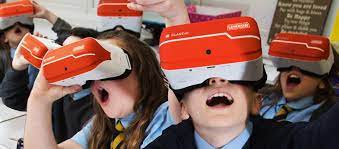
ClassVR is a company that provides schools and classrooms with VR technology. It includes lesson plans, classroom management, training, and other services.
ClassVR took the initiative of developing VR instruction for classrooms with two goals in mind. These goals are to improve student outcomes through increased engagement and to better student’s knowledge retention through personal experience.

When it comes to global collaboration, ClassVR recently launches VRroom, which allows students to participate in classes while in a virtual reality setting. Students from multiple classes can access the virtual classroom and interact with each other. This feature was created to help enhance student’s well-being, vital communication skills, and digital literacy skills. VRroom was also created to help students soothe the feeling of social isolation caused by the effects of COVID-19.

Overall, the use of VR in a classroom is aimed towards engaging students, and in turn, receiving better engagement, knowledge retention, and gain student’s interest in learning again. EdTech Magazine has a great article outlining the benefits and importance of adding VR into the classroom. One of the points they touch upon is how VR helps aid students who need extra assistance on certain skills and helps kids focus on their tasks.
National Geographic: Out of Eden Walk
The Out Of Eden Walk is Paul Salopek’s experiment in slow journalism. He is taking a 24,000-mile trek from Ethiopia to the most southern tip of South America to walk the pathways that follow the migration of humans from Africa in the Stone Age. In this trek, he is interviewing “villagers, nomads, traders, farmers, soldiers, and artists who rarely make the news” and documenting to create a global record of human life. Paul Salopek gives voices to the people who inhabit the locations he travels through by uncovering major stories “from climate change to technological innovation, from mass migration to cultural survival” and brings the world to an age of rediscovering.
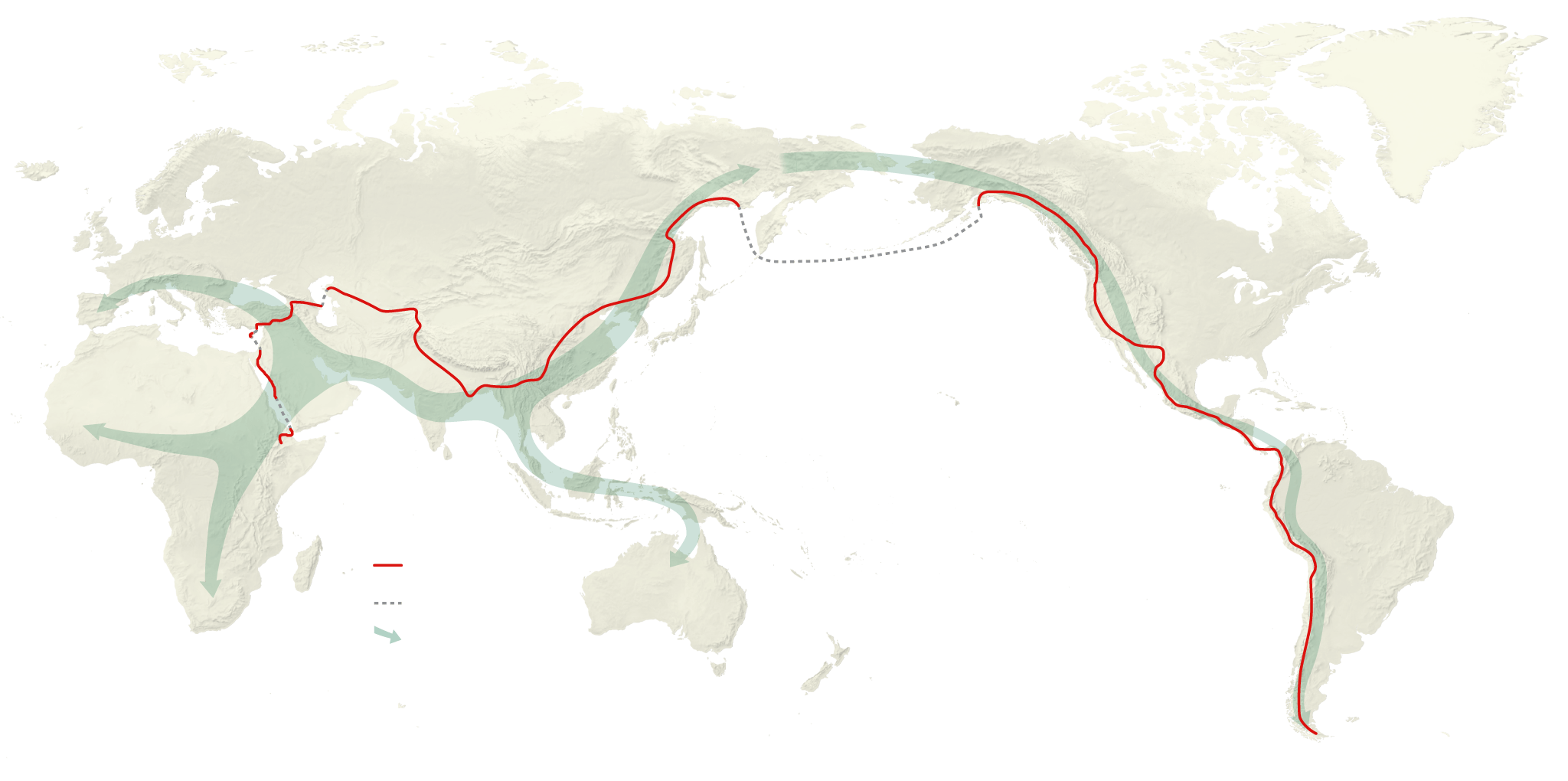
Chapter 1: Out of Africa
Chapter 1 starts off the journey in January of 2013. At every hundred miles mark, the landscape is recorded and a person of the land is interviewed.
Milestone 1 is in Herto Bouri. He interviews Idoli Mohamed, a 40 year old pastoralist. He asks them three questions: Who are you, where do you come from, and where are you going.
He laments on his life as a pastoralist, and tells that is not a good life to live. He wishes his sons to go to school and study and not become a pastoralist like him. When asked where he comes from, he says he doesn’t know. it is said his people come from Tadjoura, in Dijibouti in the north, but it’s hearsay. He more confidently says that “if Adam and Eve were human, then I don’t believe any other story. All people, black or white, we all come from them.”
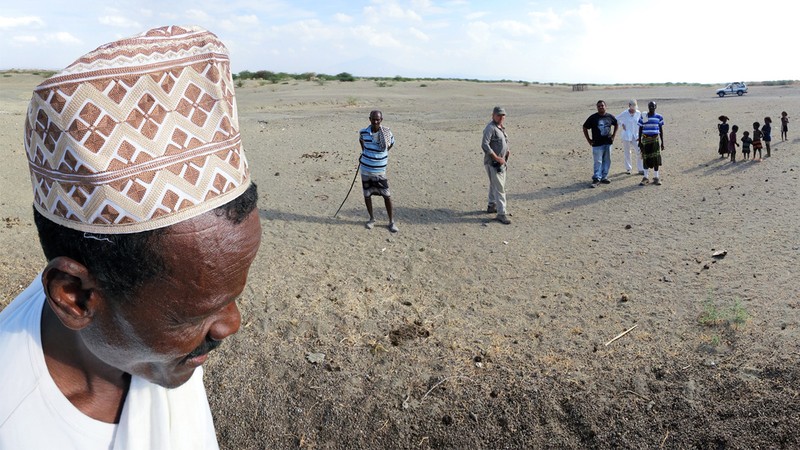
Chapter 4: The Silk Roads
Milestone 34 is in Aktau, Kazakhstan in May 2016. here he asks the same questions to Abad Urisbayev – a 34 year old member of regional parliament. He also includes Abad’s 16 year old sister, Kamila Zhangirkhan, and Abad’s 18 month old son, Abzal.
Abad gives his full name to Salopek when asked who he is. He tells that he is from here and that he is going to serve his nation. And that later that day he would go cycling.
Kamila is asked who she is, and responds by saying she is a human being and a student. She tells that she was born here and is going to study in Almaty as she wants to work in finance.
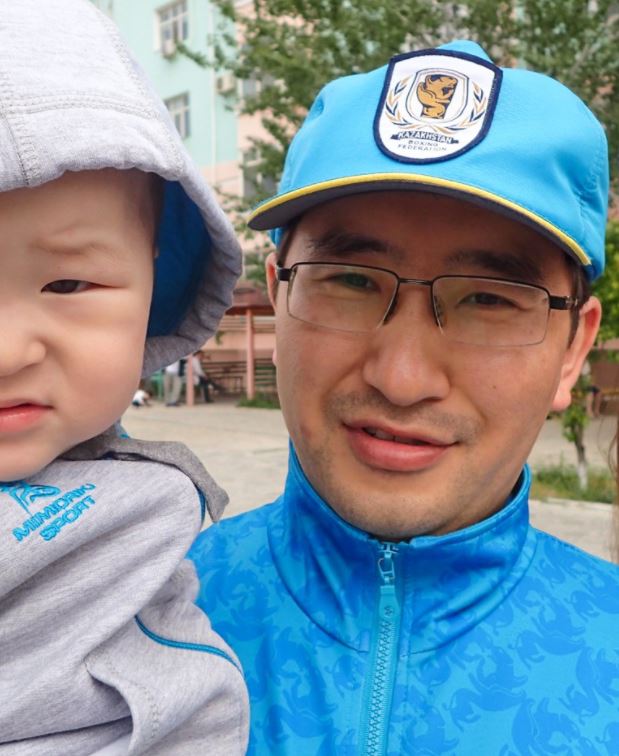
Chapter 6: Middle Kingdom
Salopek had to pause the walk due to COVID-19 restrictions. The walk was paused in Mandalay, Myanmar as Asian borders closed. The walk became impossible due to a coup that helped Myanmar’s army seize power. The trek restarted as close to the Myanmar border as legally possible, but this left a gap of 251 miles.
The most recent Milestone is Milestone 74. This is in Yusan, Yunnan, China in October 2021. He interviewed Jiang Ji Bing – a 39 year old part-time flower farmer. He explains he is from Tengchong. When asked who he is, he explains that he plants flowers for medicinal purposes, mostly Chrysanthemums of longevity as well as for fertilizer. But he explains business isn’t doing too well due to COVID and closed borders. His part time job is done on the side because of the effects of COVID but it doesn’t pay much anymore. When asked where he is going, he explains that once the flowers are picked, he goes home.

WE Virtual Learning Center – Well-Being Lessons
While exploring the WE Virtual Learning Center website, I came across their WE Well-being lessons. I believe that it is an educator’s duty to teach well-being and social skills as well as science, math, language arts, etc. The common curriculum and social skills are interchangeably important.
The lesson I want to focus on is the Empathy lesson for grades K-3. This includes a lesson on empathy as well as compassion.


Inside these PDF lessons are objectives and outlined activities to help guide students learning and understanding of these extremely important social and personal skills.

I think these lessons are wonderful to incorporate in the classroom. They also give ways to daily enforce the learning process of these skills. The website has many different well-being lessons as well as activity cards for multiple groupings of grade levels. These lessons can benefit any classroom level and any type of classroom.
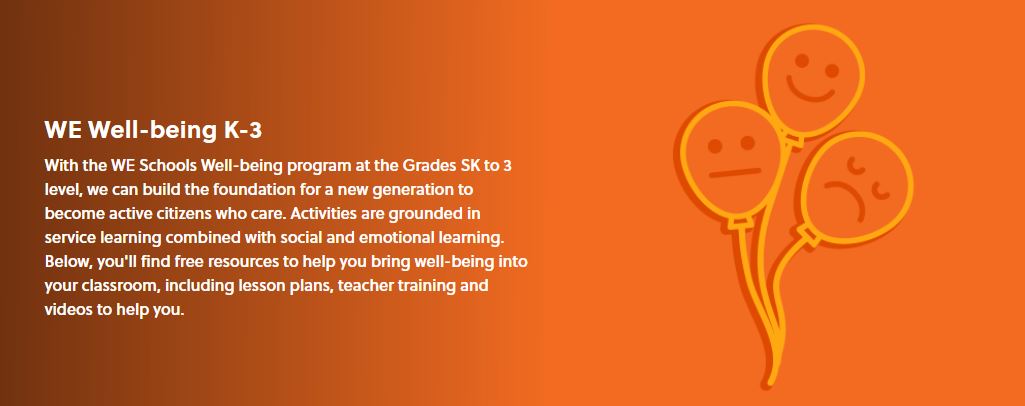
HyperDocs
HyperDocs are digital documents with hyperlinks used to facilitate learning all in one place. Watch the video below learn more about HyperDocs.
While researching more about HyperDocs, I came across a HyperDoc from an educator named Sarah Wood. In this HyperDoc, students develop storytelling skills while celebrating Día de los Muertos. She provides an interactive learning document with the following outcomes:
- Tell a written AND visual story that demonstrates a celebration of life.
- Utilize personal images and copyright-friendly images
- Design and develop your own digital ofrenda.

Click here to see her HyperDoc.
Adding HyperDocs into lessons are extremely beneficial. Not only is everything held in one place, but its beneficial in multiple ways. These ways include:
- facilitating student creativity and collaboration
- integrating various multimedia tools and digital media
- encouraging independence
- engages students
- allows students to explore, explain, apply, and reflect
I really enjoy the idea of using HyperDocs in the classroom. They’re a great way to create a community for teachers who value collaboration and lesson design. They’re also great for students because it gives them a space to explore, explain, apply, and reflect all in one place.
Live Cams at the San Diego Zoo
This week I went on a live field trip to the San Diego Zoo! Click the link here if you want to check it out.
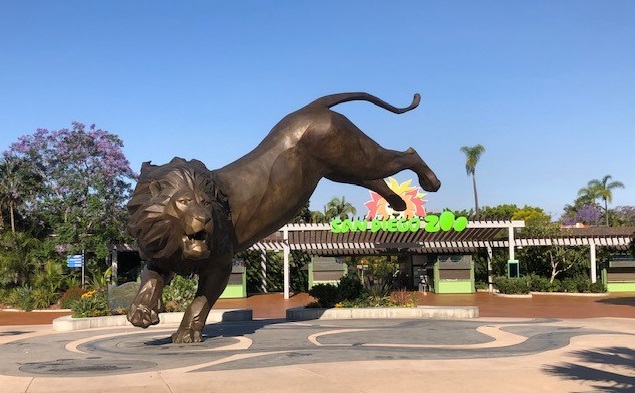
The San Diego Zoo’s website has numerous live animal cams to check out. With this technology, you can see the animals in real time without leaving the comfort of your home or classroom.
Here are some of the animals you can check out!
- Hippos
- Baboons
- Polar Bears
- Penguins
- Koalas
- Apes
- Tigers
- Elephants
- Giraffes
- Platypus
- Burrowing Owls
- Condors
- Pandas (archived pre-recorded footage – not live)
There are a lot of benefits to online virtual field trips that I had not considered in the past. Virtual field trips eliminate the cost of busses, chaperones, tickets, food, and all other expenses. They also eliminate the time of traveling that take away from learning.
However, I felt the experience of going on an online field trip to the zoo was not the same as actually going to the zoo. I was missing the excitement that the atmosphere of the zoo brings. Not hearing the animals and crowds make noise or walking through the gift shop took away from the experience. While I didn’t have to smell the unpleasant smells of a zoo and saved myself from tired and hurting feet, those are experiences that were missing.
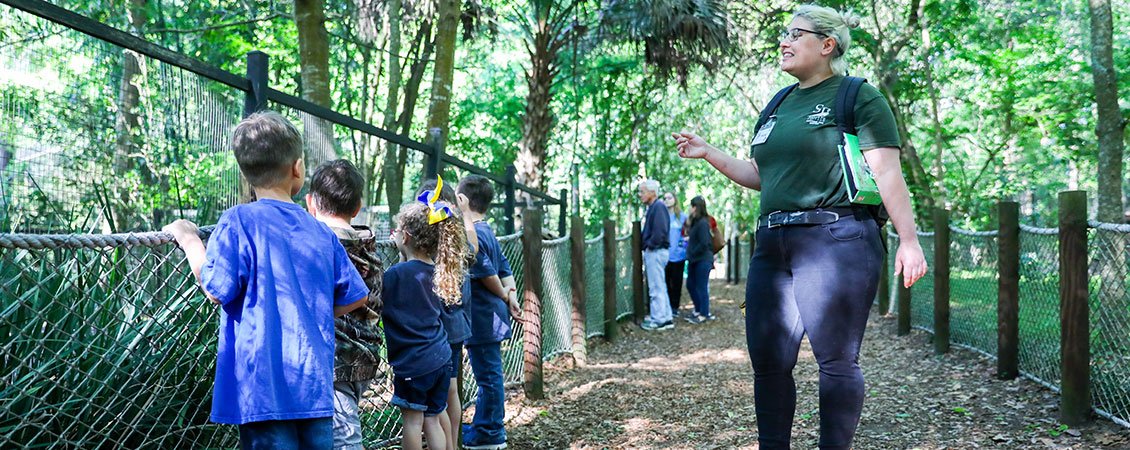
I think virtual field trips to the zoo are amazing. They’re easy to pull right up on the screen in the classroom. However, I feel as though the most integral pieces of a lesson might not stick if they experience is lacking for the students.
Cultural Similarities and Differences in Good Bye, Lenin!
Good Bye, Lenin can be viewed or rented here.

Good Bye, Lenin! is a 2003 German film that follows a family’s struggle in East Germany during the fall of the Berlin Wall. The mother, extremely dedicated to the socialist party, is in a coma as the wall collapses. Doctors tell the family that the shock of the wall collapse could very well kill their mother, so they take every action to conceal the collapse of the wall and communism.
Similarities:
- The cultural structure of family in Germany is similar if not almost identical to that in America. Roger Ebert makes an excellent point in his blog here. He states “How many of us lie to our parents, pretending a world still exists that they believe in but we have long since moved away from? And are those lies based on love or cowardice? Sometimes, despite a doctor’s warnings, parents have to take their chances with the truth.”
Differences:
- The families in East Germany must change their entire lives to fit in the West during the reunification of Germany. there’s a huge shift in political ideology, landmarks, jobs, clothing, and furniture. This is an experience I never had to endure due to laws, social culture, already inherent capitalist society, and the democracy of America.
Cultural, Social, Political Influences:
- The falling of Socialist ideology and lifestyle are overtaken by West Germany’s Capitalist society.
- Alex creates an almost parallel universe for his mother, having the culture, lifestyle, and world he once knew live on in his mother’s hospital room (and bedroom), whilst trying to fit in to the western culture out in the world.
The Benefits of Microsoft Translator for Education
Microsoft Translator for Education provides a service that allows users to hear or read what someone is saying in a language that they choose. This tool helps bridge the language and hearing gap for those who are deaf, hard of hearing, and language learners. This tools is extremely beneficial in the classroom or for any and all communication with parents, guardians, and families.
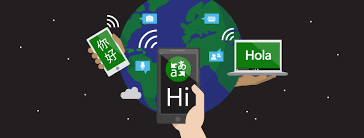
To use the tool, teacher’s share a code with whoever is in the classroom. They then have access to listen to and read a transcript of the lesson in real time in any language they choose. In fact, the tool can translate multiple languages at the same time. This makes Microsoft Translator the ultimate tool for creating an accessible and accommodating classroom with live captioning. It also helps develop cross-language understanding and creates vital conversations between those who understand different languages, which is key to student integration.
The tool is ideal for:
- Lectures and Presentations
- Parent-Teacher Conferences
- Study Groups
- Conversations
The tool also has many resources for both parents and teachers as well as case studies on how to the tool has aided in classrooms.
Watch the video down below to find out more about this amazing tool!
Goal 5 – Achieve Gender Equality and Empower all Women and Girls
Sustainable development means making the world a better place without depleting opportunities for future generations. World leaders came together and developed the 17 Global Goals for Sustainable Development to help put an end to extreme poverty, inequalities, and climate change. The World’s Largest Lesson provides free creative materials in multiple languages to help teach students the importance of Sustainable Development.

Goal 5 indicates the need to achieve gender equality and empower all women and girls. The inherent need to achieve goal five can be seen in the targets and indicators tab, as well as the following statistics:
- 1 in 3 women (736 million) have been subjected to physical and/or sexual violence at least once in their lifetime since the age of 15.
- Women are represented only 25.6% in national parliaments, 36.3% in local governments and 28.2% in managerial positions
- Women spend 2.5 times as many hours as men on unpaid domestic and care work.
- 100 million girls were projected to become child brides before the pandemic. In addition, 10 million more girls are at risk of child marriage as a result of COVID-19.
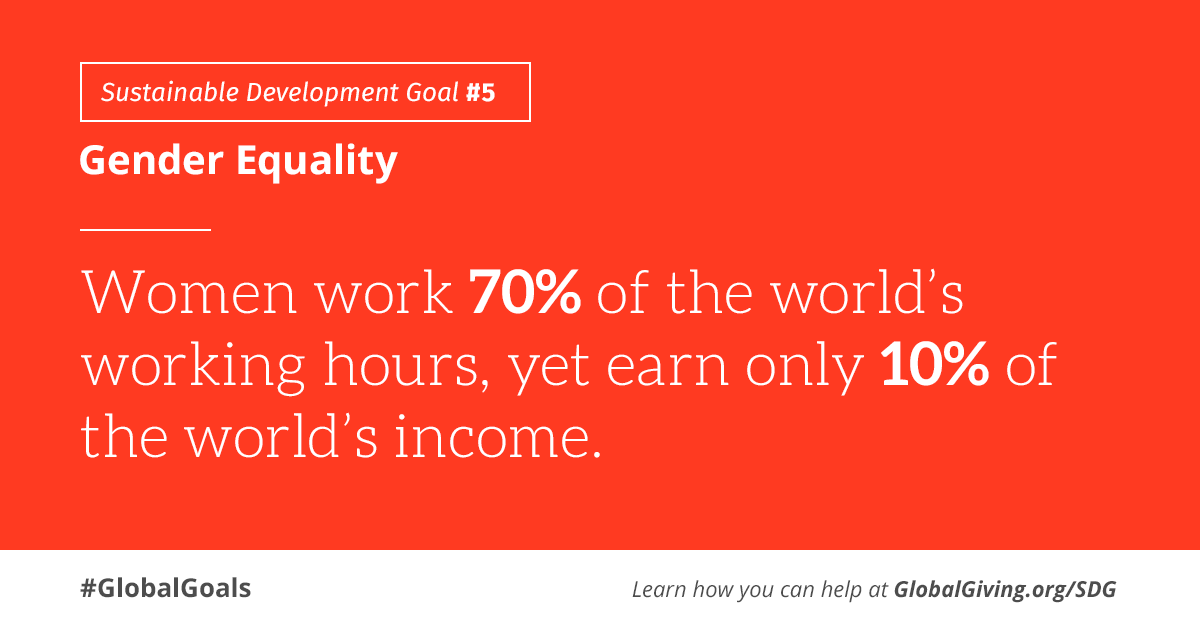
Unfortunately, the COVID-19 pandemic has caused many socioeconomic impacts that have greatly worked against achieving Goal 5. The United Nations reports that violence against women and girls have intensified, child marriage is projected to increase, and care work at home has disproportionately affected women. Women still remain unrepresented in leadership roles. With the pandemic causing shifts, an opportunity has opened for the possibility of reshaping and rebuilding systems, laws, policies, and institutions to help aide the advancement of gender equality.
The Brookings Institution explains the importance of girl’s education in bridging the gender equality gap in this article. It discusses the importance, the hindrance COVID-19 has caused, and promising solutions.
Empatico in the Classroom
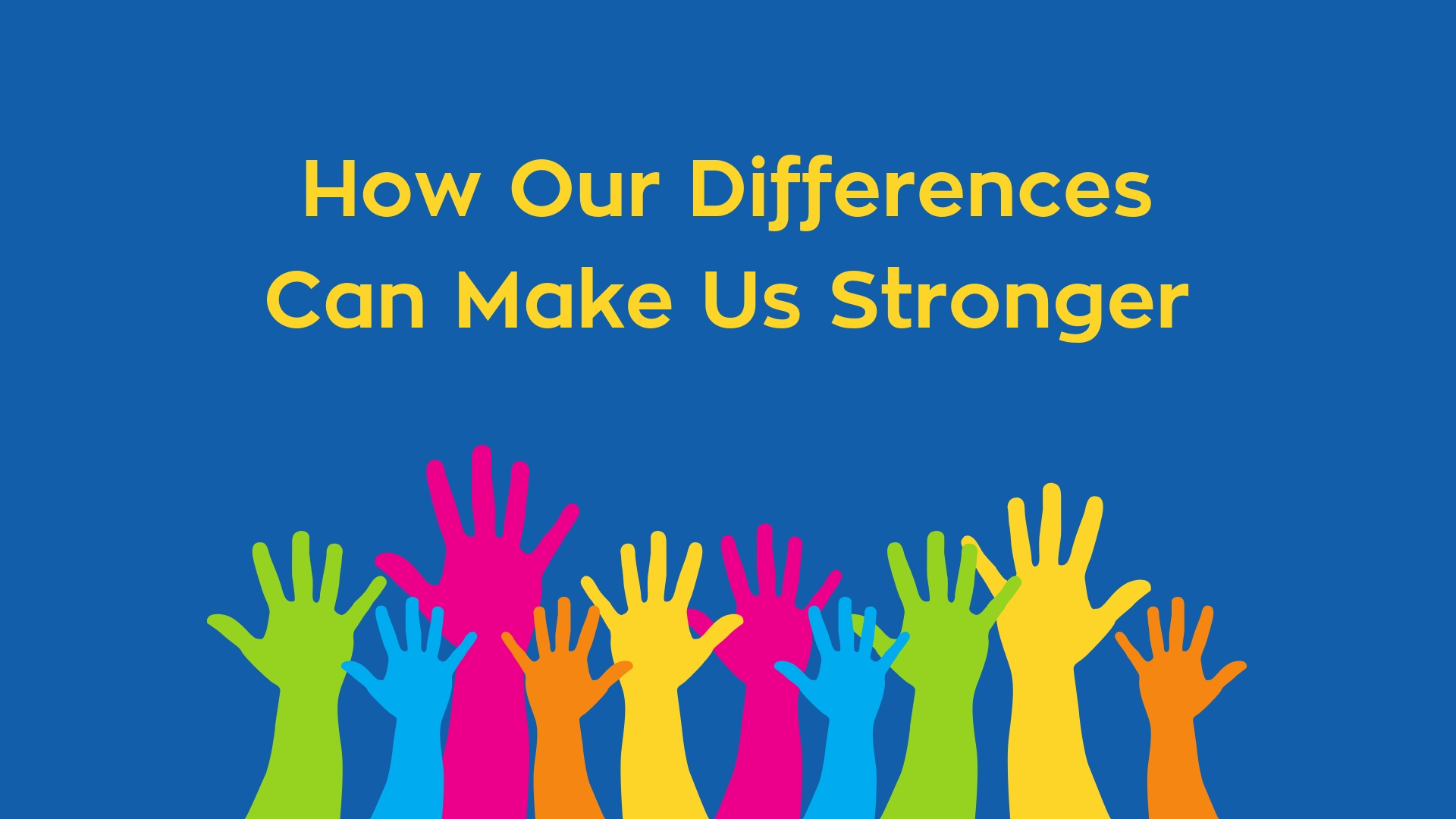
Empatico allows students to see other cultures and communities, share their experiences, learn from others whose lives are different from theirs. This tool is FREE and combines everything that you need in one place. This includes live video, file sharing, and activities. It also pairs you with a classroom based on interests, age groups, and more.
Social and emotional skills are just as important as academic skills. As an educator, my classroom will be cultivating an environment of empathic and kind students who hold the future of the world in their hands as well as their hearts. This tool is an excellent way to give my students real world experience with people and cultures different from what they see in their own circle at home and school.
Students will have the opportunity to practice critical thinking, cooperation, perspective talking, and learn how to communicate respectfully. Empatico helps build interpersonal skills that will benefit them throughout their life. This generation of students will be interacting with countless people who come from many different walks of life and giving them the tools and skills necessary to properly interact, communicate, and build substantial relationships that will set them up for success.
This tool would have been extremely helpful in a classroom I was in when I was younger. We connected to students in Japan via Skype and writing letters. However, setting up times to Skype and waiting for letters to come back took up a lot of time. Also, participating in activities was hard due to the lack of technology in both the schools. Luckily, Empatico has bridged this gap so that educators and students can get more out of this experience than ever before.
Collaboration – Minecraft & Minecraft: Education Edition

Minecraft is an incredible technology tool that can be used in the classroom.
Digital Citizenship
Minecraft helps students build their digital citizenship and professionalism. When playing, students must use teamwork and verbal and digital communication skills to reach their goals. These goals could be a variety of things. Students could be working towards building a building, solving a puzzle, or playing minigames on an online server. They can build effective communication skills through play.
Conflict Resolution
Playing Minecraft allows students a relaxed social setting to explore conflict resolution techniques. While developing their effective communication skills, students may become easily frustrated that things are not playing out in their favor or going their way. Students are then forced to collaboratively find a solution to resolve their communication before they can finish their original task.
Minecraft: Education Edition
In 2016, Minecraft: Education Edition was released, opening even more possibilities for teachers and students. This edition grants teachers access to hundreds of lesson plans involving Minecraft based on common curriculum. Students can conduct science experiments, tell stories, and learn how to code all in one edition.
Click here to see a more in-depth guide to this edition of Minecraft.
Recent Comments